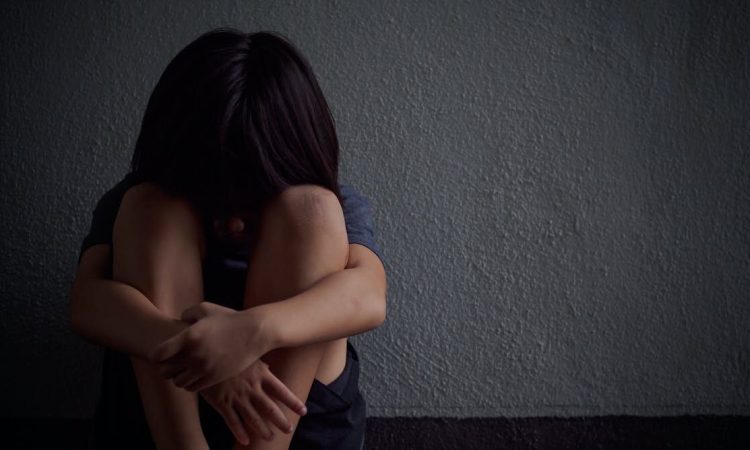
Child abuse and neglect is, unfortunately, a far more common occurrence in Australia than many people realize.
In Australia in 2020–21 (the most recent figures available), there were more than half a million notifications to child protection services. Around 180,000 children and young people are receiving child protection support and 46,000 are in out-of-home care. These figures are all on the rise.
Child maltreatment can be hidden. Often children don’t know what they are experiencing is maltreatment, and they can find it hard to speak up. People who notice something isn’t right may not know how to get support. And those inflicting the harm may go to great lengths to cover it up.
Protecting children and young people is everyone’s business, but there are some groups who can play a key role. Teachers, for example, are in a unique position to build trust with children and observe changes over time and are responsible for around one-quarter of all notifications.
There is another workforce who encounter children and young people at risk of maltreatment. They have the advantage of being regularly asked to enter people’s houses, and are able to observe children at home: paramedics.
A unique view into the home
Emotional abuse (when a child is made to feel worthless, isolated or frightened) is the type of harm child protection services most commonly hear about (around half the cases in Australia). This is followed by neglecting to provide essential care for children’s physical or emotional development (21%), physical abuse (14%) and sexual abuse (10%).
Child maltreatment is not usually the result of an unknown, “evil” person preying on vulnerable children. The harm is more likely to be inflicted by a family member, or someone known to the child, and it’s also not always because they want to harm the child. Sometimes caregivers simply do not have adequate resources to properly care for their children. They may have poor access to health care or medications, or be in the grips of food insecurity.
In the past five years, 764 children (aged 0–17) were flagged by a paramedic for suspected maltreatment in Victoria alone. It is likely this is only a tiny fraction of the true number of children experiencing maltreatment who are seen by paramedics.
Paramedics are in a unique position to witness early signs of abuse and neglect that may otherwise remain hidden. Despite this potential, they have very little education on child maltreatment, and they report feeling unprepared and unsure how to help. This is likely a major contributor to the low reporting rates.
How well do paramedics recognize and report child maltreatment?
We asked 217 Victorian paramedics about their knowledge of child maltreatment. They mostly understood how to make a report to child protection services. However, when we gave them ten short written portrayals of child maltreatment paramedics commonly encounter and asked them what they would do, the results were different.
Paramedics are quite good at identifying visible signs of maltreatment, such as physical or sexual abuse or neglect, but struggle to identify less-visible forms, such as emotional abuse or exposure to family violence.
They are also less likely to make a report about cases involving emotional abuse, which is worrying considering emotional abuse accounts for half of all substantiated cases.
Paramedics want to make sure children and young people are safe, but feel unsure and don’t act unless the maltreatment is obvious. They are being reactive—rather than taking a proactive, risk-based approach to prevent maltreatment before it occurs.
Typical reasons health-care professionals don’t make a report when they suspect child maltreatment include not feeling supported by their employer to do so. There are a few simple things we can do to address this.
Change is needed
Paramedics could fill a huge gap in our child protective services, undertaking an “early warning system” role to help prevent maltreatment before it occurs. This would fall within the existing scope of practice for all paramedics in Australia, who have a legal and ethical responsibility to ensure the safety of their patients.
To do this we first need legislative change. In Australia there is legislation in each state making it a crime for certain people to fail to report suspected child maltreatment. Paramedics are not listed in the legislation, despite nurses, doctors and teachers being listed.
Adding paramedics to this group would ensure there is a sufficient legal impetus for them to make a report. Mandatory reporting increases the visibility of maltreated children and does not appear to significantly discourage people from using a health service.
Next, we need to improve paramedic education so they have a full understanding of all forms of child maltreatment and interrupting cycles of violence. This must emphasize less visible forms of maltreatment and early warning signs. Ambulance services should ensure paramedics understand their obligations, have access to clear policies and procedures, and feel supported.
Perhaps most importantly, we need to train our paramedics to be proactive, rather than reactive. Our research shows paramedics are reluctant to make a report until they see clear signs maltreatment has occurred. Because maltreatment often escalates over time, the earlier warning signs are identified, and children and caregivers connected with supportive services, the safer children will be.
Provided by
The Conversation
This article is republished from The Conversation under a Creative Commons license. Read the original article.
Source: Read Full Article
